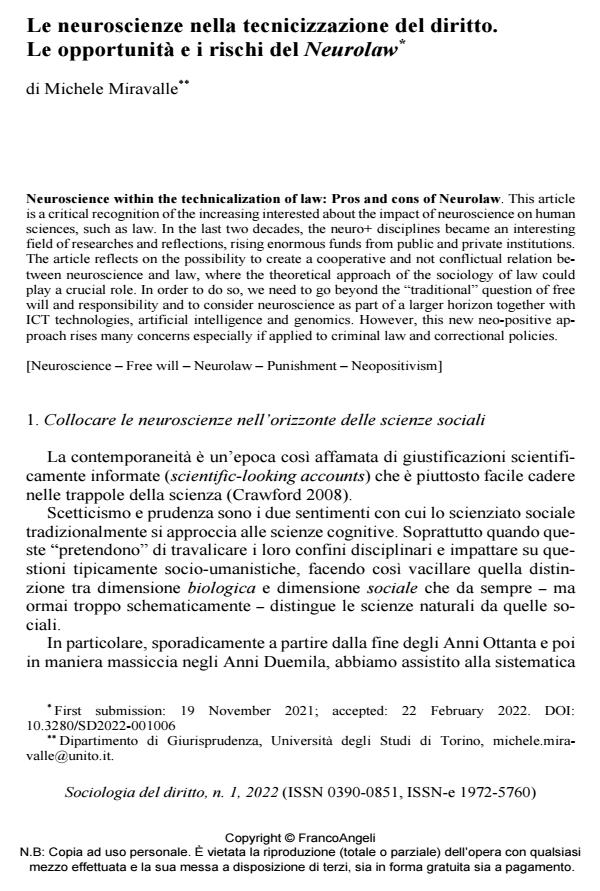Neuroscience within the technicalization of law: Pros and cons of Neurolaw
Journal title SOCIOLOGIA DEL DIRITTO
Author/s Michele Miravalle
Publishing Year 2022 Issue 2022/1
Language Italian Pages 6 P. 129-152 File size 272 KB
DOI 10.3280/SD2022-001006
DOI is like a bar code for intellectual property: to have more infomation
click here
Below, you can see the article first page
If you want to buy this article in PDF format, you can do it, following the instructions to buy download credits

FrancoAngeli is member of Publishers International Linking Association, Inc (PILA), a not-for-profit association which run the CrossRef service enabling links to and from online scholarly content.
This article is a critical recognition of the increasing interested about the impact of neuroscience on human sciences, such as law. In the last two decades, the neuro+ disciplines became an interesting field of researches and reflections, rising enormous funds from public and pri-vate institutions. The article reflects on the possibility to create a cooperative and not conflictual relation between neuroscience and law, where the theoretical approach of the sociology of law could play a crucial role. In order to do so, we need to go beyond the "traditional" ques-tion of free will and responsibility and to consider neuroscience as part of a larger horizon to-gether with ICT technologies, artificial intelligence and genomics. However, this new neo-positive approach rises many concerns especially if applied to criminal law and correctional policies.
Keywords: Neuroscience - Free will - Neurolaw - Punishment - Neopositivism
Michele Miravalle, Le neuroscienze nella tecnicizzazione del diritto. Le opportunità e i rischi del Neurolaw in "SOCIOLOGIA DEL DIRITTO " 1/2022, pp 129-152, DOI: 10.3280/SD2022-001006